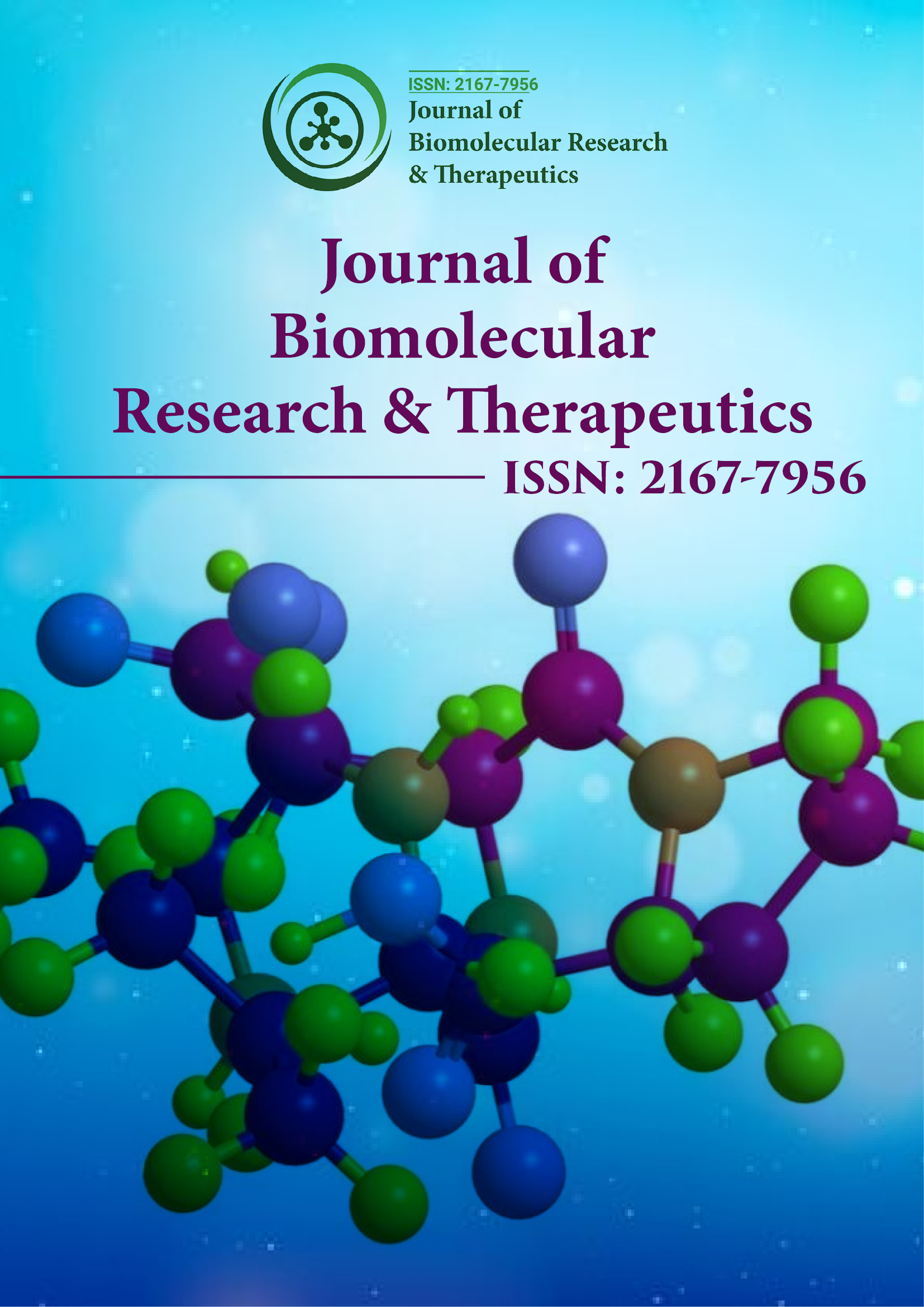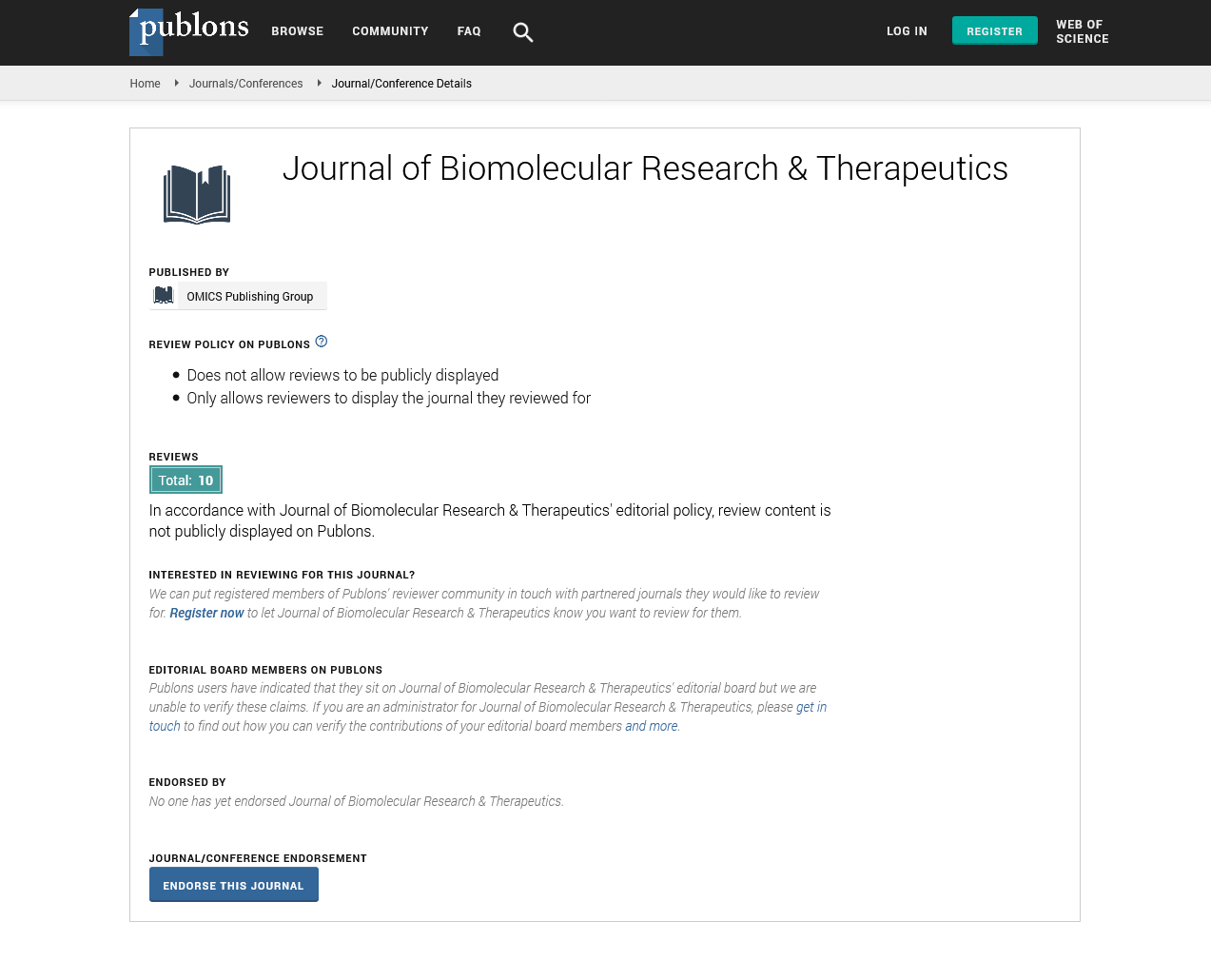PMC/PubMed Indexed Articles
Indexed In
- Open J Gate
- Genamics JournalSeek
- ResearchBible
- Electronic Journals Library
- RefSeek
- Hamdard University
- EBSCO A-Z
- OCLC- WorldCat
- SWB online catalog
- Virtual Library of Biology (vifabio)
- Publons
- Euro Pub
- Google Scholar
Useful Links
Share This Page
Journal Flyer

Open Access Journals
- Agri and Aquaculture
- Biochemistry
- Bioinformatics & Systems Biology
- Business & Management
- Chemistry
- Clinical Sciences
- Engineering
- Food & Nutrition
- General Science
- Genetics & Molecular Biology
- Immunology & Microbiology
- Medical Sciences
- Neuroscience & Psychology
- Nursing & Health Care
- Pharmaceutical Sciences
Editorial - (2021) Volume 10, Issue 9
Editorial Note on Extracellular matrix
Bindhu Madhavi*Received: 20-Sep-2021 Published: 30-Sep-2021, DOI: 10.35248/2167-7956.21.10.177
Editorial
Extracellular Matrix (ECM) is a broad particle network made out of three significant segments: protein, glycosaminoglycan, and glycoconjugate. ECM parts, just as cell bond receptors, associate with one another framing a perplexing organization into which cells dwells in all tissues and organs. Cell surface receptors transduce signals into cells from ECM, which manage assorted cell capacities, like endurance, development, multiplication, relocation, separation, and some fundamental job in keeping up with cells homeostasis. This part stresses the complex of ECM design to give a superior comprehension of its dynamic primary and utilitarian portrayal and multipotency. In this part the ramifications of ECM in tissue rebuilding are essentially talk about on the neuronal recovery and wound recuperating system within the sight of Human Umbilical Mesenchymal Molded Medium (HU-MSCM).
ECM is a non-cell structure that directs practically the entirety of the phone capacities. ECM is an exceptionally unique underlying organization that constantly goes through redesigning intervened by a few framework corrupting chemicals during ordinary and neurotic conditions. Liberation of ECM creation and design has a relationship with the turn of events and movement of a few physiological and pathologic conditions. In this section, we portray the construction and capacity of ECM, likewise the job of ECM on the injury recuperating component and neuronal recovery in the focal sensory system (CNS) and fringe sensory system (PNS).
Extracellular matrix components
The extracellular network has three significant parts:
• Highly thick proteoglycans (heparan sulfate, keratan sulfate, chondroitin sulfate), which pad cells.
• Insoluble collagen filaments, which give strength and versatility.
• Soluble multiadhesive extracellular framework proteins (fibronectin, laminin), which tie proteoglycans and collagen strands to receptors on the cell surface. Various mixes of these parts tailor the framework for various capacities relying upon the measure of solidarity (for instance ligaments), padding (for instance ligament) and attachment required. All extracellular lattice segments are incorporated intracellularly and emitted by means of exocytosis.
Multicellular creatures are shaped by specific cells collected in tissues. Singular cells contact and collaborate with different cells and with the extracellular grid - an organization of emitted proteins and carbs that occupies the intercellular spaces. The extracellular network assists cells with restricting together and manages various cell capacities, like attachment, movement, expansion, and separation. It is shaped by macromolecules, privately emitted by inhabitant cells. The extracellular framework is included non-cell parts inside tissues that structure a fundamental platform for cell constituents. The construction of the extracellular lattice varies in piece between tissue types yet is basically comprised of collagen filaments, proteoglycans and multiadhesive network proteins that are emitted by cells.
The elements of the extracellular framework include:
• Forming a fundamental help structure for cells.
• Controlling correspondence between cells.
• Segregating tissues.
• Regulating cell cycles like development, movement and separation.
The extracellular lattice can be separated into two gatherings, each with a particular construction. The first are called interstitial lattices and encompass cells, while the second are named pericellular grids and are cell-related. The storm cellar film is a significant illustration of a pericellular framework found between the utilitarian and connective tissue. The construction gives a securing layer that keeps useful tissue cells together. The phones implanted inside the extracellular grid interface through surface receptors and incorporate signs from the network that are related with their capacity.
Citation: Madhavi B (2021) Editorial note on Extracellular matrix. J Biomol Res Ther. 10: 177.
Copyright: © 2021 Madhavi B. This is an open-access article distributed under the terms of the Creative Commons Attribution License, which permits unrestricted use, distribution, and reproduction in any medium, provided the original author and source are credited.

